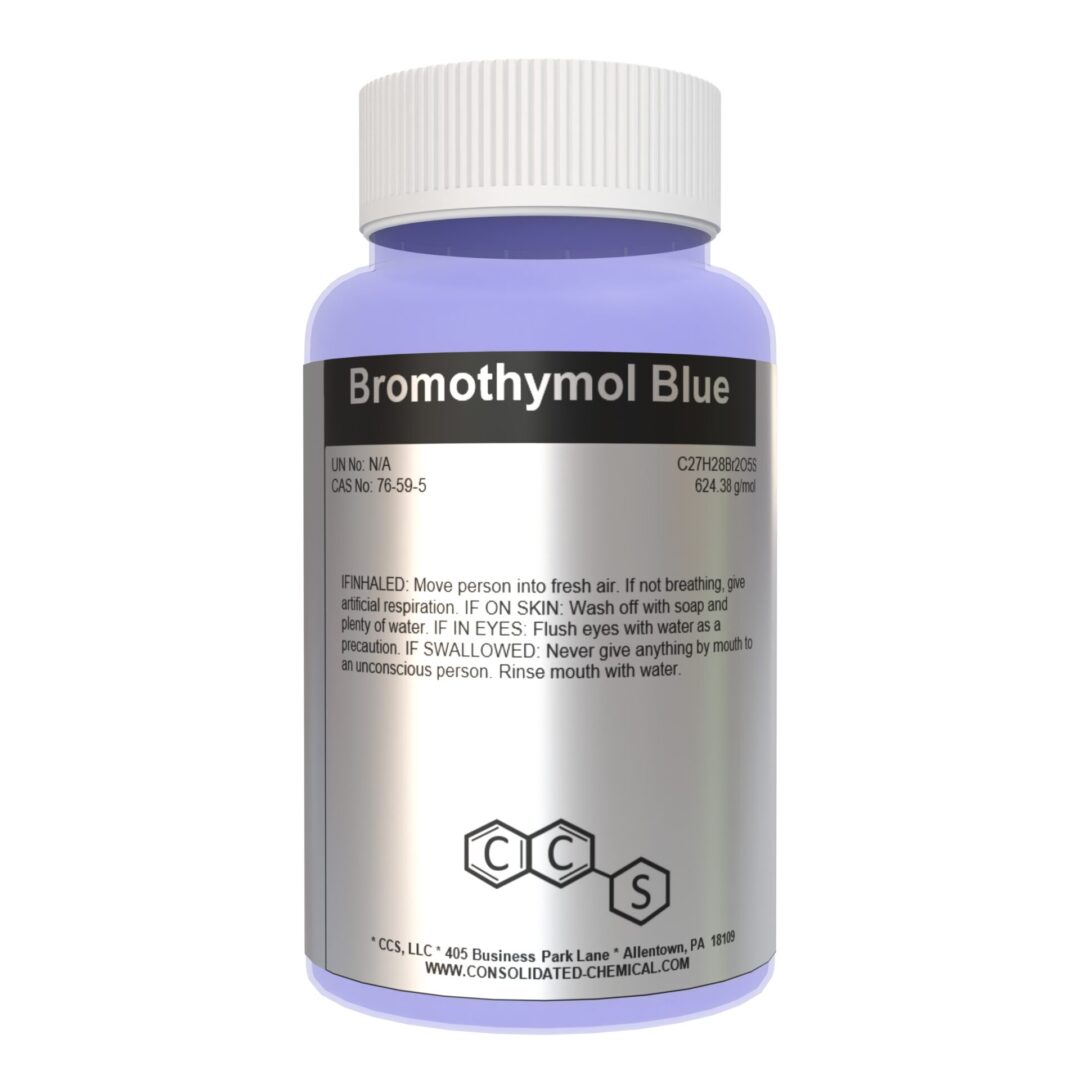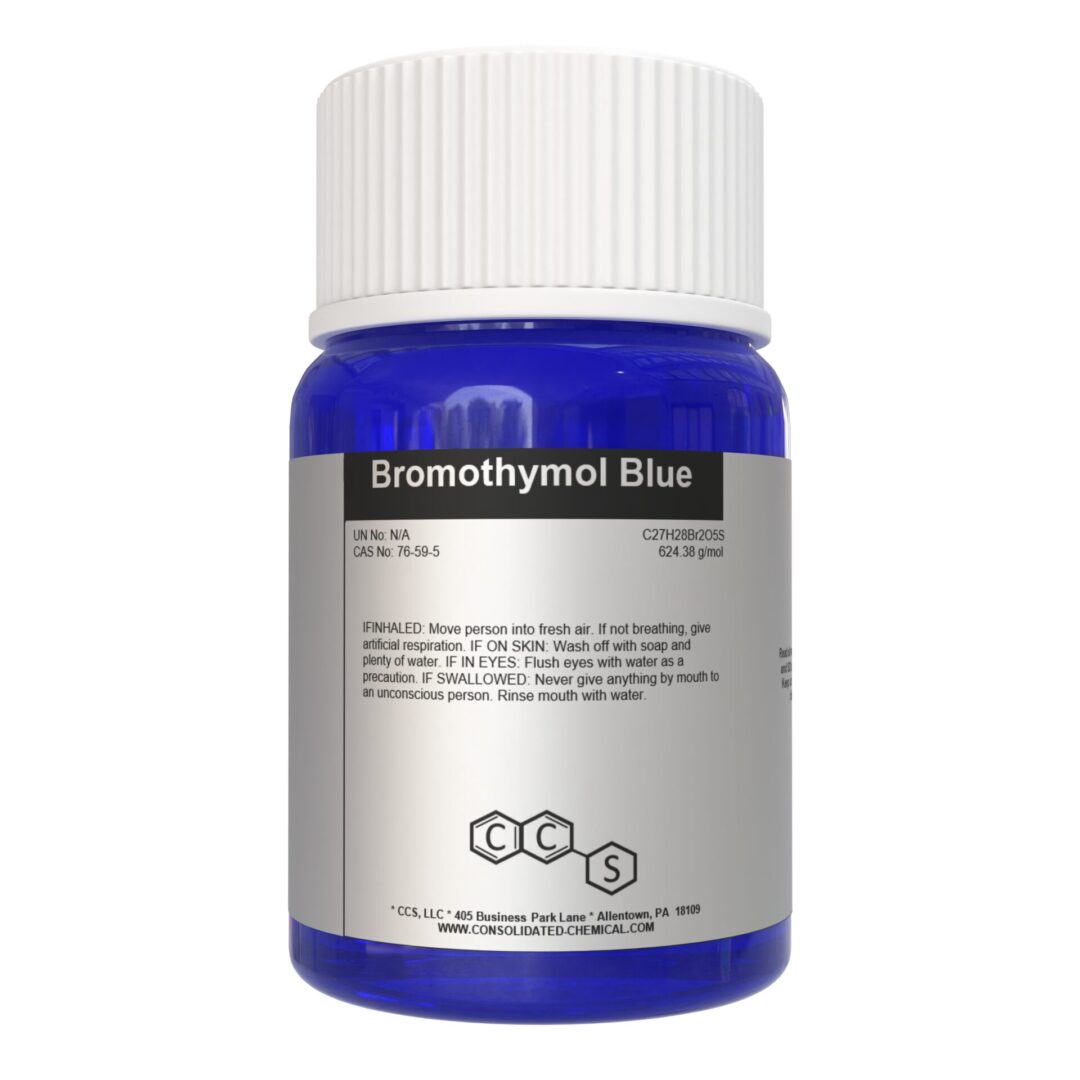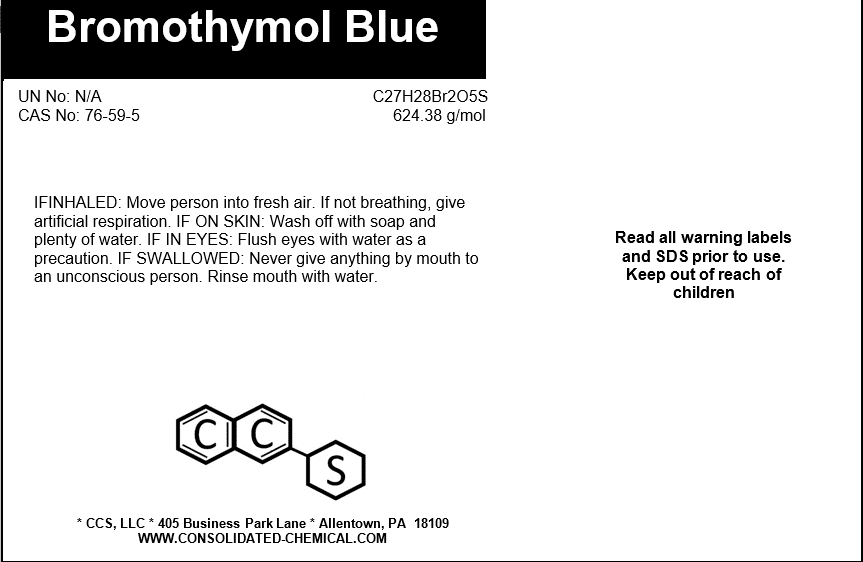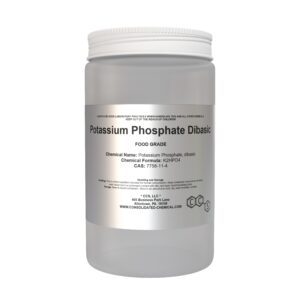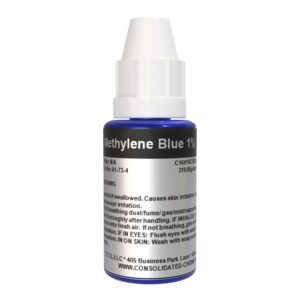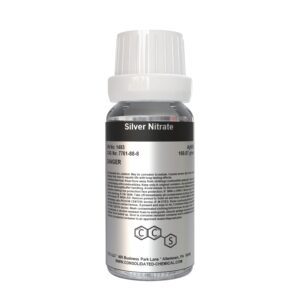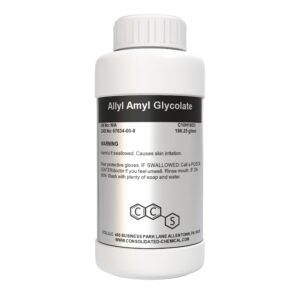Bromothymol Blue Indicator | High-Purity Reagent Grade
$19.99 – $60.00
Chemical Information
- Chemical Name: Bromothymol Blue (BTB)
- CAS Number: 76-59-5
- Molecular Formula: C₂₇H₂₈Br₂O₅S
- Molecular Weight: 624.38 g/mol
- Appearance: Yellow-green crystalline powder or dark blue solution (in water/ethanol)
- Odor: Odorless
- Purity: ≥ 99% (Reagent Grade)
Physical & Chemical Properties
- pH Transition Range: 6.0 (yellow) – 7.6 (blue)
- Solubility: Soluble in ethanol, slightly soluble in water
- Melting Point: 202–205°C (decomposes)
- Absorption Maxima: ~427 nm (acidic form), ~615 nm (basic form)
- Stability: Stable under normal laboratory conditions
Mechanical & Stability Properties
- Light Sensitivity: May degrade upon prolonged UV exposure
- Combustibility: Non-flammable
- Storage Stability: Long shelf life under proper storage conditions
Description
Bromothymol Blue (BTB) is a high-purity pH indicator reagent widely used in laboratory analysis, scientific research, and industrial applications. It is commonly employed in acid-base titrations, medical diagnostics, water quality testing, and educational experiments. With its distinct color transition from yellow to blue across a pH range of 6.0 to 7.6, Bromothymol Blue provides precise pH measurement and reliable analytical performance.
Applications for Bromothymol Blue:
1. Laboratory & Analytical Chemistry
- pH Indicator: Used in titrations and acid-base analysis.
- Buffer Solutions: Employed in pH calibration and testing.
- Spectrophotometric Analysis: Utilized in colorimetric pH measurement.
2. Medical & Biological Research
- Respiratory Studies: Monitors CO₂ levels in medical and physiological applications.
- Cell Culture & Microbiology: Used to assess pH changes in biological media.
- Diagnostic Kits: Component in blood gas and urinalysis test kits.
3. Environmental & Water Quality Testing
- Aquatic pH Monitoring: Determines water alkalinity and acidity in environmental studies.
- Aquarium & Hydroponic Testing: Ensures pH stability for aquatic life and plant growth.
- Industrial Wastewater Analysis: Detects acidity fluctuations in effluent discharge.
4. Educational & Demonstration Experiments
- Acid-Base Experiments: Used in high school and college chemistry labs.
- Color Change Demonstrations: Engages students in hands-on learning of chemical reactions.
- DIY Science Kits: Included in at-home chemistry and learning kits.
5. Industrial & Specialty Applications
- Fermentation Monitoring: Used in brewing, biotechnology, and biofuel production.
- Coatings & Dye Formulations: Incorporated into pH-sensitive inks and textiles.
- Food & Beverage Testing: Evaluates acidity levels in food processing.
Storage
- Store in a cool, dry, and dark environment.
- Keep in tightly sealed containers to prevent moisture absorption.
- Avoid prolonged exposure to light to maintain stability.
Handling
- Use gloves, lab coat, and eye protection when handling.
- Minimize dust formation and avoid inhalation.
- Use in well-ventilated areas or fume hoods.
Safety
- Hazard Classification: Non-toxic but may cause mild irritation upon contact.
- Inhalation Risk: Avoid inhaling fine powder or vaporized solutions.
- First Aid: If in contact with skin or eyes, rinse with water. If ingested, seek medical attention.
Additional information
| Size | 10 GRAMS, 25 GRAMS, 50 GRAMS |
|---|
Related products
-

Potassium Phosphate, Dibasic – Food Grade Additive
$14.99 – $27.99 Select options This product has multiple variants. The options may be chosen on the product page -

Methylene Blue 1% Aqueous Stain/dye Solution
$12.00 Select options This product has multiple variants. The options may be chosen on the product page -

Silver Nitrate – Premium High-Purity Grade
$19.99 – $220.00 Select options This product has multiple variants. The options may be chosen on the product page -

Allyl Amyl Glycolate | Premium Fragrance/Aroma Compound
$16.00 – $29.99 Select options This product has multiple variants. The options may be chosen on the product page
SKU: N/A
Categories: Industrial Chemical, Ph Indicators (5)
Tags: bromothymol blue, bromothymol blue ACS grade, bromothymol blue alternative names, bromothymol blue analytical grade, bromothymol blue analytical standards, bromothymol blue best price, bromothymol blue bulk packaging, bromothymol blue bulk supplier, bromothymol blue CAS 76-59-5, bromothymol blue chemical properties, bromothymol blue competitive pricing, bromothymol blue eco-friendly, bromothymol blue evaporation rate, bromothymol blue for blood gas analysis, bromothymol blue for CO₂ detection, bromothymol blue for environmental testing, bromothymol blue for fermentation monitoring, bromothymol blue for home chemistry kits, bromothymol blue for laboratory experiments, bromothymol blue for medical diagnostics, bromothymol blue for microbiology, bromothymol blue for pharmaceutical applications, bromothymol blue for respiratory studies, bromothymol blue for scientific studies, bromothymol blue for spectrophotometry, bromothymol blue for university labs, bromothymol blue global trade, bromothymol blue handling, bromothymol blue high demand, bromothymol blue high purity, bromothymol blue import export, bromothymol blue in acid-base reactions, bromothymol blue in aquariums, bromothymol blue in biological studies, bromothymol blue in biotechnology, bromothymol blue in buffer solutions, bromothymol blue in chemical research, bromothymol blue in chemistry education, bromothymol blue in cosmetic formulations, bromothymol blue in experimental chemistry, bromothymol blue in food testing, bromothymol blue in hydroponics, bromothymol blue in industrial coatings, bromothymol blue in pH testing, bromothymol blue in sustainable chemistry, bromothymol blue in textile dyes, bromothymol blue in titrations, bromothymol blue in wastewater testing, bromothymol blue indicator, bromothymol blue industrial use, bromothymol blue industry insights, bromothymol blue innovative applications, bromothymol blue laboratory use, bromothymol blue manufacturer, bromothymol blue market trends, bromothymol blue MSDS, bromothymol blue online store, bromothymol blue pH indicator, bromothymol blue powder, bromothymol blue quality control, bromothymol blue reagent grade, bromothymol blue regulatory compliance, bromothymol blue research chemical, bromothymol blue safety precautions, bromothymol blue shelf life, bromothymol blue solubility, bromothymol blue solution, bromothymol blue stability, bromothymol blue storage, bromothymol blue supplier, bromothymol blue technical specifications, bromothymol blue trade name, bromothymol blue trending reagent, bromothymol blue USP grade, bromothymol blue wholesale, buy bromothymol blue

